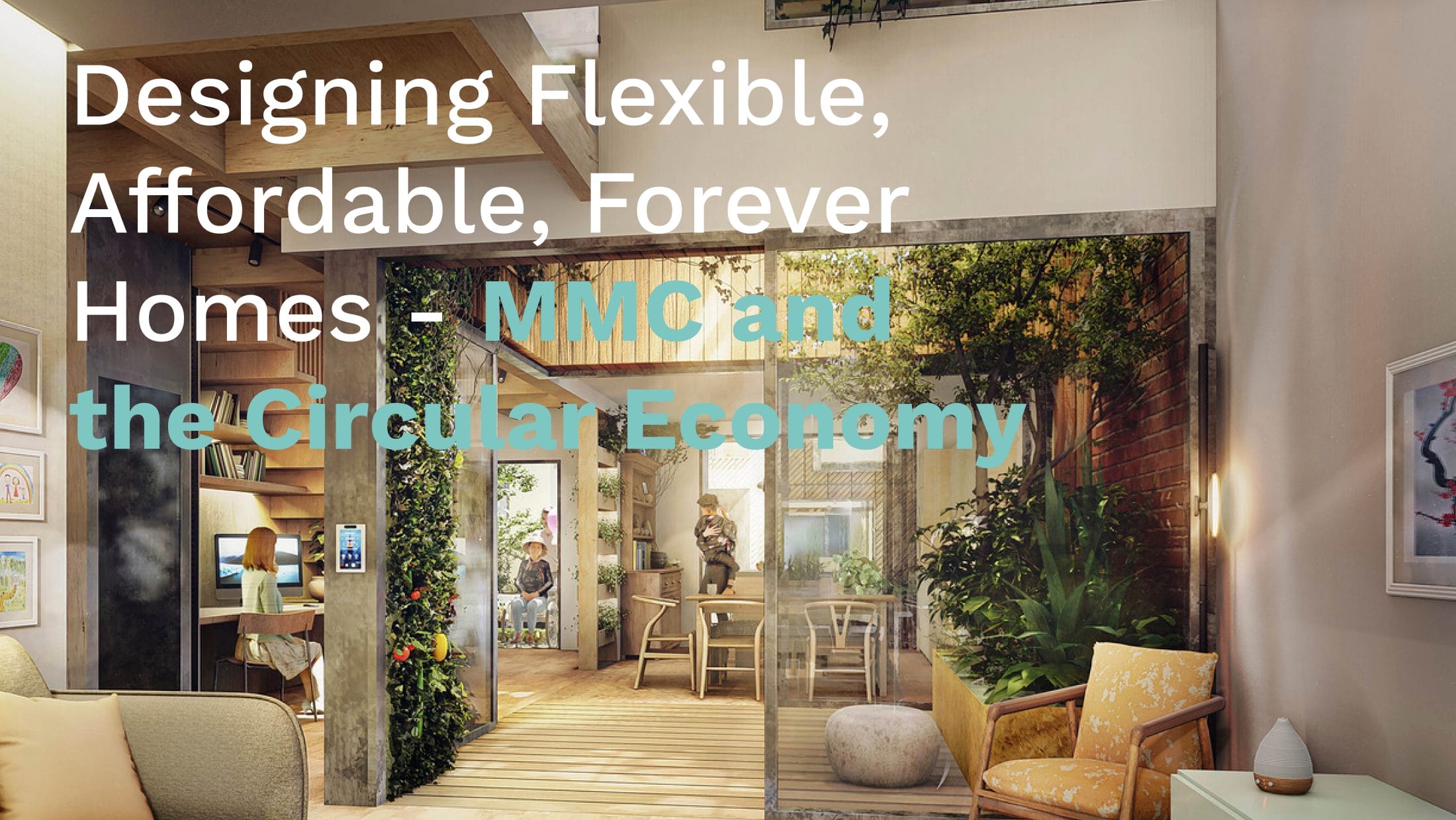
With sustainability increasing in momentum, Anna Kiho explores the potential of integrating circular principles into Modern Methods of Construction. How could combining ‘old’ materials with ‘new’ technology and approaches pave the way for a new era of sustainable developments?
“People need homes that are affordable throughout their lifetime, and they want homes that are reflective of their individuality. What if we could provide both, while embracing circular economy and prioritising the reuse of existing materials?”
The push for a more sustainable built environment is continuing to build momentum, and has fuelled the industry-led initiatives such as Architects Declare, LETI Climate Emergency Design Guide and the RIBA Sustainable Outcomes 2030. Change is also afoot on the governmental policy level; from June, ‘Building Regulations will be amended to enforce a 30% cut on emissions from new homes.’ [All new buildings must emit a third less carbon, government announces | News | Building Design (bdonline.co.uk)], a step change towards where the construction industry needs to aim long-term. However, the general industry consensus is that this is not yet ambitious enough – more prioritising the reuse of materials in conjunction with other carbon reducing methods is what we need to look at more closely.
For the housing sector, the concept of reuse, particularly of whole components of homes, sparks some interesting avenues to explore. In addition to the clear sustainability benefits, what other advantages might a fully functioning circular economy of building components bring to the way we design and use our homes? People need homes that are affordable throughout their lifetime, and they want homes that are reflective of their individuality. What if we could provide both, while embracing circular economy and prioritising the reuse of existing materials?
The Home of 2030 design concept as submitted by HLM for the 2020 competition allows for exactly this. Up until now, MMC and Offsite methods have largely focussed on creating ‘new’, manufacturing the components that become the ‘kit of parts’ used in construction.
HLM’s concept, on the other hand, visualises a home that can be adapted to meet the changing life circumstances of its residents through treating each home as an assembly of components. Based around a fixed base rate for a plot, the concept provides each buyer with the space to increase (and subsequently decrease) the size of their home in line with their life requirements, as and when their resources allow. As a result, these homes are also more accessible to first time buyers, therefore potentially contributing to a solution to the ongoing housing crisis affecting our society. For those struggling to get onto the housing ladder, the concept provides a ‘starter home’ which can be easily adapted, becoming the ‘forever home’. The model utilises MMC and Offsite methods to ensure standardisation of components, ease of assembly and disassembly, transportation, and greater quality control. Focussing on ‘lift and lock’, as opposed to more traditional, ‘sticky’ construction, the principle lends itself to utilising materials that have previously been used in other construction projects, reworked into components that meet the specifications (e.g. dimensions), required.
We must prioritise collaboration across the industry, introducing a procedure for bringing components back to the market and thus creating a circular process. Establishing a modular platform with universal design dimensions and specification standards will create an open market for building elements, allowing manufacturers to confidently invest in production and supply. This platform would consolidate disassembled components, sorting, storing, cataloguing and assessing their potential for reuse in future projects. Home buyers could then select features and styles based on their personal preference, confident in the knowledge that they are contributing positively through these choices.
Older houses are known for their solid build and character, but are more likely to need higher levels of maintenance once inhabited; conversely, newer homes are often considered less robust, but have fewer maintenance needs. By bringing circular principles into the MMC and offsite arena, we can produce projects that utilise the efficiencies of these methods, while creating unique homes that maintain a sense of character and durability associated with more traditional builds. We can prolong the life of historical materials, and create a new generation of homes that contrast with the uniform mass housing often synonymous with new developments.
Opening up MMC-led design to suit a unique and adaptable model can successfully satisfy the need for affordable homes – that are flexible enough that people will want to live in them forever.


